|
|
|
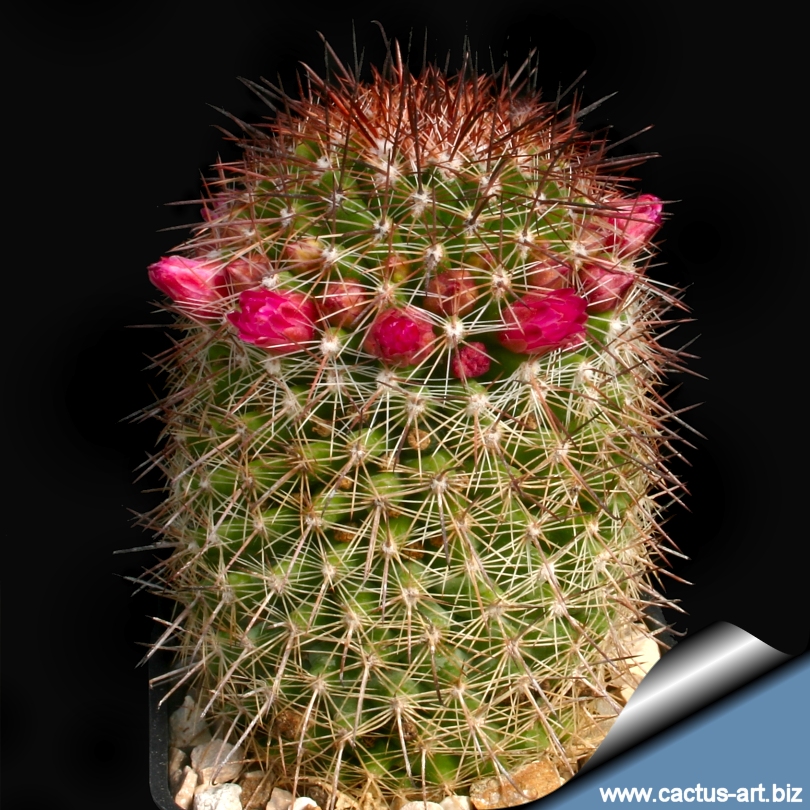
Mammillaria bambusiphila v. parva L 761 Coalcoman,
Michoacan, Mexico 1000m
Slowly forms cylindrical stems that remain solitary
for a long time.
|
|
Description: Solitary or (rarely) clumping.
Stems: Cylindrical, up to 20 cm tall 4 - 8 cm in diameter.
Central spines: 3 to 5 central spines, straight, (sometimes
hooked) , the lower longer, glassy white or pale brown, black at the
tips, 5 - 11 mm long.
Radial spine: About 16-20 straight, very thin white with brown at
the base and the tips. 3 - 5 mm long, the upper spines the shorter,
Axil: Naked or with a little wool.
Flower: Carmine, 15 - 17 mm in length, 5 - 7 mm in diameter,
narrowly opening.
Blooming season (Europe): June.
Fruit: Reddish brown or greenish.
Seed: Brown. |
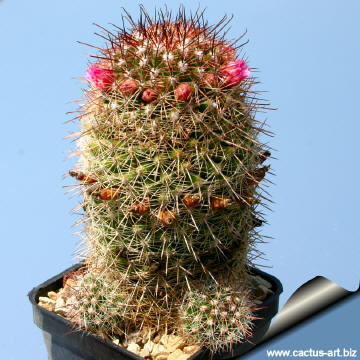 |
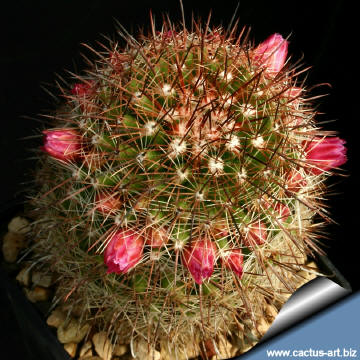 |
|
. |
|
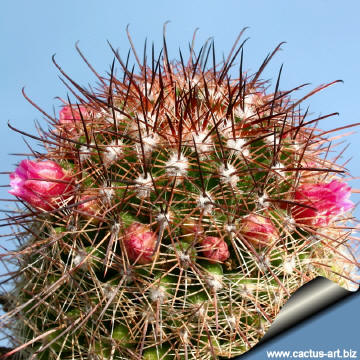 |
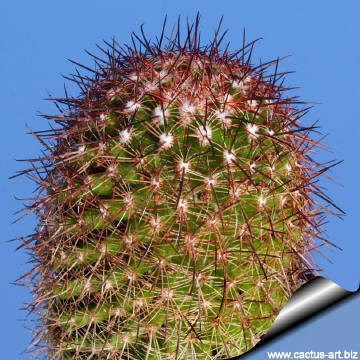 |
|


|
|
Advertising
|
|
|
|
|
Family:
Cactaceae (Cactus
Family)
Mammillaria bambusiphila v. parva Reppenhagen,
Published in: Mitteilungsbl. AfM, cf. Repert. Pl. Succ.
(I. O. S.), 10 (5): 167-171; 37: 4 (1986 publ. 1988), 1986
Accepted
Scientific name: Mammillaria xaltianguensis ssp. bambusiphila
(W.
Reppenhagen) D.R. Hunt,
Published in: Mammillaria Postscripts 6: 8, 1997
Mammillaria
bambusiphila v. parva Rep 663, Coalcoman, Mixh, 1100m,
M. bambusiphilla and its variety parva.
Origin: Origin: Mexico (Michoacán: Huacana)
Altitude 800 - 1.200 m.
Conservation status: Listed in
CITES appendix 2.
Synonyms:
- Mammillaria xaltianguensis H. Sánchez-Mejorada
Published in: R., Anales del Instituto de Biologia
de la Universidad Nacional Autonoma de Mexico 44 (1): 30, 1973
- Mammillaria bambusiphila W. Reppenhagen,
Published in: Mitteilungsbl. AfM, cf. Repert. Pl.
Succ. (I. O. S.), 10 (5): 161-166; 37: 4 (1986 publ. 1988), 1986
|
|
|
|
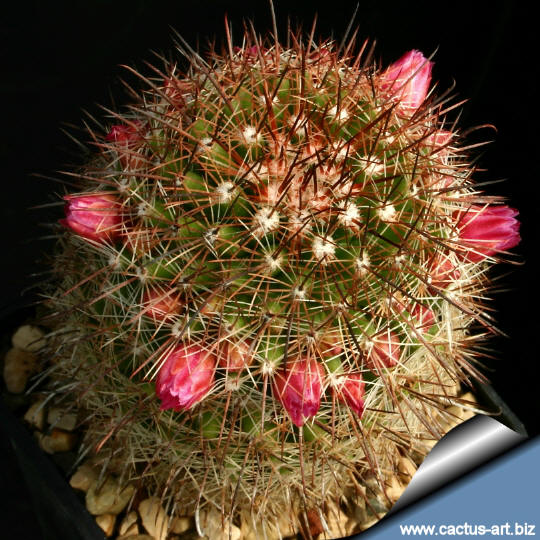
The narrowly opening flowers are carmine and
appear on the crown of the plant in June
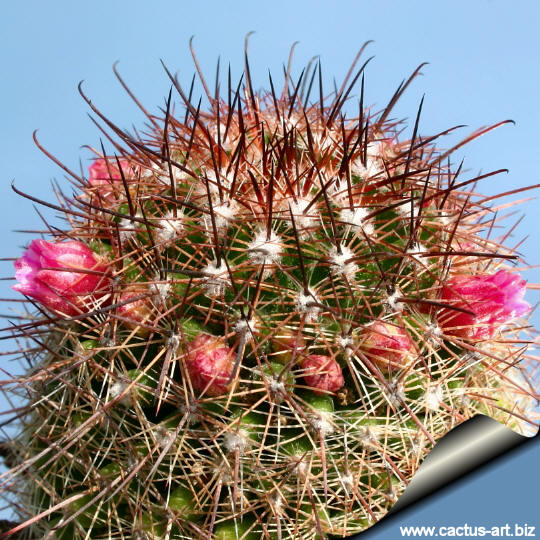
Cultivation: It is a slow growing species
of easy culture, recommended for any collection that needs
lots of light with ample airflow. Water regularly in summer, but do
not overwater (very
wet-sensitively, especially in light of its small root system)
Water thoroughly only if soil is dry to
the touch, let soil dry in between to prevent root rot,
keep dry in
winter. Use a very porous
mineral-based potting mix, with excellent drainage, as can be achieved by the addition
of extra perlite
or pumice. Feed with a high potassium
fertilizer in summer.
Care must be taken with watering as
they tends
to become swollen and untidy in growth habit if given too much
water and shade.
Sun Exposure: High levels of light are needed to
flower and for good spine development.
Can be sunburned if moved
from shade/greenhouse into full sun too quickly. During the spring it
may be able to take full sun until the heat arrives at the end of
spring. In an area that has hot afternoon sun, it may be able to take
full morning sun, but requires afternoon shade or afternoon light shade.
If grown correctly, it will reward the grower with generous
displays of flowers.
It is quite frost resistant if
kept dry, hardy as low as -5° C (or less) A resting period in winter and strong light are necessary so that it can
flower properly.
Clustering in cultivation after several years and easily flowered.
For best results, use a shallow pot, and only use the smallest
diameter pot that will accommodate the plant. Sensitive to red
spider mite. Overhead watering is helpful in controlling mites.
Propagation: Direct sow after last frost
(usually) or division, wait
until the
offsets that appear at the
base of old clustered
specimens
are 1/3 the size of the parent and then detach and plant.
|
|